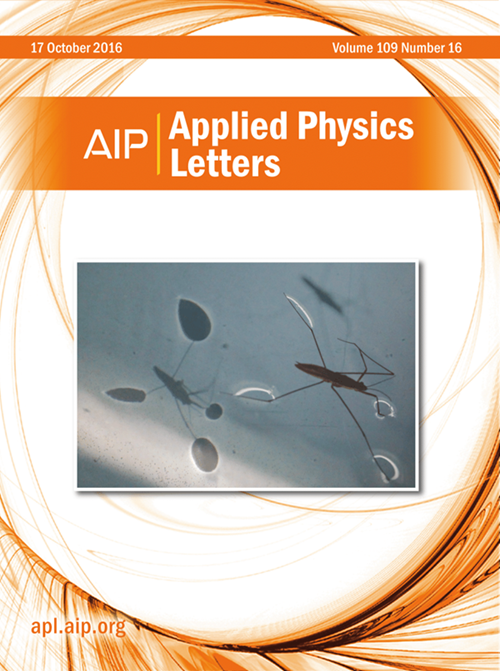vdW铁磁Fe3GeTe2纳米片器件中竞争相互作用和挫折的解耦效应
IF 3.6
2区 物理与天体物理
Q2 PHYSICS, APPLIED
引用次数: 0
摘要
二维(2D)范德华(vdW)磁体和器件由于远程磁序稳定到原子极限,以及具有独特功能的量子器件的前景而引起了极大的关注。为了实现这一目标,澄清磁输运性质和理解与降维相关的相互作用是极其重要的。本文研究了少原子层Fe3GeTe2和(Co0.25Fe0.75)3GeTe2纳米片器件的磁输运特性。沿易轴外加磁场的磁输运研究显示出反常的霍尔效应,而沿硬轴外加磁场的磁输运研究则显示出反常的霍尔效应。考虑到反铁磁、铁磁和局部对称破缺相互作用的原子计算揭示了由热波动辅助的磁受挫效应的关键作用,导致非零标量自旋手性在非常规霍尔效应中表现出来。本研究结果阐明了二维低层vdW铁磁材料体系中潜在的相互作用,对于理解二维自旋电子器件中vdW磁体的非共线自旋构型具有重要意义。本文章由计算机程序翻译,如有差异,请以英文原文为准。
Unraveling effects of competing interactions and frustration in vdW ferromagnetic Fe3GeTe2 nanoflake devices
Two-dimensional (2D) van der Waals (vdW) magnets and devices have garnered significant attention owing to the stabilization of long-range magnetic order down to atomic limit, and the prospect for quantum devices with unique functionalities. To achieve this objective, clarification of magnetotransport properties and understanding of the relevant interactions with lowering of dimensions are of extreme importance. Here, the magnetotransport properties of few atomic layer Fe3GeTe2 and (Co0.25Fe0.75)3GeTe2 nanoflake devices have been investigated. Magnetotransport investigations with applied magnetic field along the easy-axis show anomalous Hall effect, while that for applied magnetic field along the hard-axis reveal an unusual behavior. Atomistic calculations considering the presence of antiferromagnetic, ferromagnetic, and local symmetry-breaking interactions reveal the critical role of magnetic frustration effect assisted by thermal fluctuations, leading to a non-zero scalar spin chirality manifesting in an unconventional Hall effect. The present result clarifies the underlying interactions in few-layer 2D vdW ferromagnetic material system, important for the understanding of non-collinear spin configurations in vdW magnets for 2D spintronic devices.
求助全文
通过发布文献求助,成功后即可免费获取论文全文。
去求助
来源期刊

Applied Physics Letters
物理-物理:应用
CiteScore
6.40
自引率
10.00%
发文量
1821
审稿时长
1.6 months
期刊介绍:
Applied Physics Letters (APL) features concise, up-to-date reports on significant new findings in applied physics. Emphasizing rapid dissemination of key data and new physical insights, APL offers prompt publication of new experimental and theoretical papers reporting applications of physics phenomena to all branches of science, engineering, and modern technology.
In addition to regular articles, the journal also publishes invited Fast Track, Perspectives, and in-depth Editorials which report on cutting-edge areas in applied physics.
APL Perspectives are forward-looking invited letters which highlight recent developments or discoveries. Emphasis is placed on very recent developments, potentially disruptive technologies, open questions and possible solutions. They also include a mini-roadmap detailing where the community should direct efforts in order for the phenomena to be viable for application and the challenges associated with meeting that performance threshold. Perspectives are characterized by personal viewpoints and opinions of recognized experts in the field.
Fast Track articles are invited original research articles that report results that are particularly novel and important or provide a significant advancement in an emerging field. Because of the urgency and scientific importance of the work, the peer review process is accelerated. If, during the review process, it becomes apparent that the paper does not meet the Fast Track criterion, it is returned to a normal track.
 求助内容:
求助内容: 应助结果提醒方式:
应助结果提醒方式:


